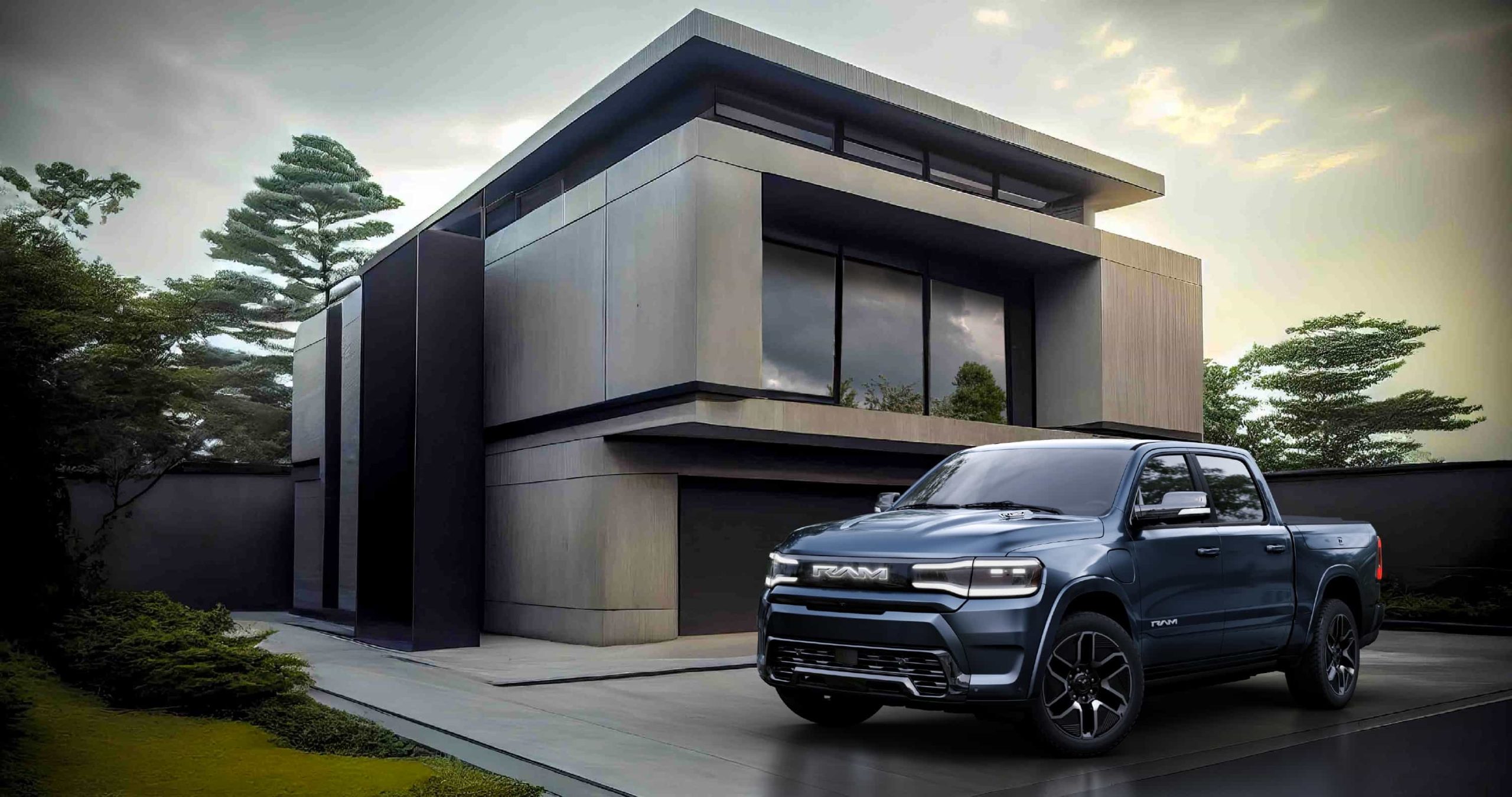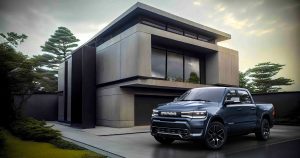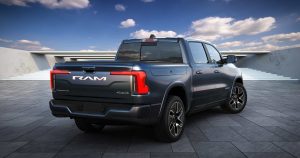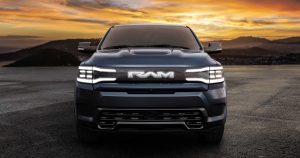RAM has revealed more specifications for the upcoming RAM 1500 REV electric truck, and the company claims the truck will be “class-shattering.”
As a significant player in the American truck market and a sizable portion of the “Big Three” American automakers, many have been anxious to see what the RAM’s first electric truck would look like and how it would perform. Today, the company outlined those exact details by revealing a laundry list of specifications for the upcoming RAM 1500 REV.
It’s clear that the RAM 1500 REV has taken aim at the current segment leader, the Ford F-150 Lightning, and has brought the specs to do battle with its Blue Oval competitor. Most notably, the RAM 1500 REV will have an incredible 500 miles of max range, thanks to an incredibly large 229kWh battery. Though it should be noted the truck will also have a standard range option, equipped with a still gargantuan 168kWh battery, capable of 350 miles of range.
“The all-electric Ram 1500 REV is a monumental milestone on our continued journey to offer the industry’s best-electrified solutions and further fortifies our award-winning lineup,” said Mike Koval Jr., Ram brand CEO. “We believe in bringing the right range of powertrain solutions to our customers and will continue to redefine the pickup truck segment. Our all-new Ram 1500 REV pushes past the competition in areas customers care about most, including range, towing, payload, and charge time.”
- Credit: Stellantis
- Credit: Stellantis
- Credit: Stellantis
Outside these insane range specifications, RAM promises massive payload and towing, 2,700 pounds and 14,000 pounds, respectively. These numbers are possible thanks to impressive performance capabilities, including 654 horsepower, 620 pound-feet of torque, a 4.4 second 0-60mph time, and even two feet of water fording.
Further aiming to dethrone the current market leader, RAM has doubled down on the charging capabilities of the F-150 Lightning, supporting not only vehicle-to-load and vehicle-to-home but also vehicle-to-grid, much like systems currently offered by battery storage systems from Tesla.
- Credit: Stellantis
- Credit: Stellantis
The final major upgrade from the Ford offering is the inclusion of 800-volt architecture, which can allow for the truck to achieve higher efficiency, which it will most certainly need thanks to the planet-sized batteries it will be carrying. The RAM 1500 REV supports charging up to 350kW, which RAM says is enough to give a driver 110 miles of range in roughly 10 minutes.
The RAM 1500 REV is expected to go on sale by the end of 2024, but it remains unclear if it will be a market-leading vehicle by then. While RAM has benefitted from entering the market later than its competition in the United States, allowing it to beat the competition on specifications, that is becoming increasingly difficult. RAM will not only be battling with Ford and Rivian but also Tesla’s Cybertruck (coming later this year) and two GM offerings; the Chevy Silverado EV and GMC Sierra EV. Only time will tell how well the upcoming Big Horn truck will compete with its American counterparts.
What do you think of the article? Do you have any comments, questions, or concerns? Shoot me an email at william@teslarati.com. You can also reach me on Twitter @WilliamWritin. If you have news tips, email us at tips@teslarati.com!

Elon Musk
GM CEO Mary Barra says she told Biden to give Tesla and Musk EV credit
“He was crediting me, and I said, ‘Actually, I think a lot of that credit goes to Elon and Tesla…You know me, Andrew. I don’t want to take credit for things.”

General Motors CEO Mary Barra said in a new interview on Wednesday that she told President Joe Biden to credit Tesla and its CEO, Elon Musk, for the widespread electric vehicle transition.
She said she told Biden this after the former President credited her and GM for leading EV efforts in the United States.
During an interview at the New York Times Dealbook Summit with Andrew Ross Sorkin, Barra said she told Biden that crediting her was essentially a mistake, and that Musk and Tesla should have been explicitly mentioned (via Business Insider):
“He was crediting me, and I said, ‘Actually, I think a lot of that credit goes to Elon and Tesla…You know me, Andrew. I don’t want to take credit for things.”
GM CEO Mary Barra said to Andrew Sorkin at the New York Times Dealbook Summit that she pulled President Biden aside and said Tesla CEO @elonmusk deserved the credit for EVs:
“He was crediting me, and I said, ‘Actually, I think a lot of that credit goes to Elon and Tesla,’” Barra… pic.twitter.com/OHBTG1QfbJ
— TESLARATI (@Teslarati) December 3, 2025
Back in 2021, President Biden visited GM’s “Factory Zero” plant in Detroit, which was the centerpiece of the company’s massive transition to EVs. The former President went on to discuss the EV industry, and claimed that GM and Barra were the true leaders who caused the change:
“In the auto industry, Detroit is leading the world in electric vehicles. You know how critical it is? Mary, I remember talking to you way back in January about the need for America to lead in electric vehicles. I can remember your dramatic announcement that by 2035, GM would be 100% electric. You changed the whole story, Mary. You did, Mary. You electrified the entire automotive industry. I’m serious. You led, and it matters.”
People were baffled by the President’s decision to highlight GM and Barra, and not Tesla and Musk, who truly started the transition to EVs. GM, Ford, and many other companies only followed in the footsteps of Tesla after it started to take market share from them.
Elon Musk and Tesla try to save legacy automakers from Déjà vu
Musk would eventually go on to talk about Biden’s words later on:
“They have so much power over the White House that they can exclude Tesla from an EV Summit. And, in case the first thing, in case that wasn’t enough, then you have President Biden with Mary Barra at a subsequent event, congratulating Mary for having led the EV revolution.”
In Q4 2021, which was shortly after Biden’s comments, Tesla delivered 300,000 EVs. GM delivered just 26.
News
Tesla Full Self-Driving shows confident navigation in heavy snow
So far, from what we’ve seen, snow has not been a huge issue for the most recent Full Self-Driving release. It seems to be acting confidently and handling even snow-covered roads with relative ease.
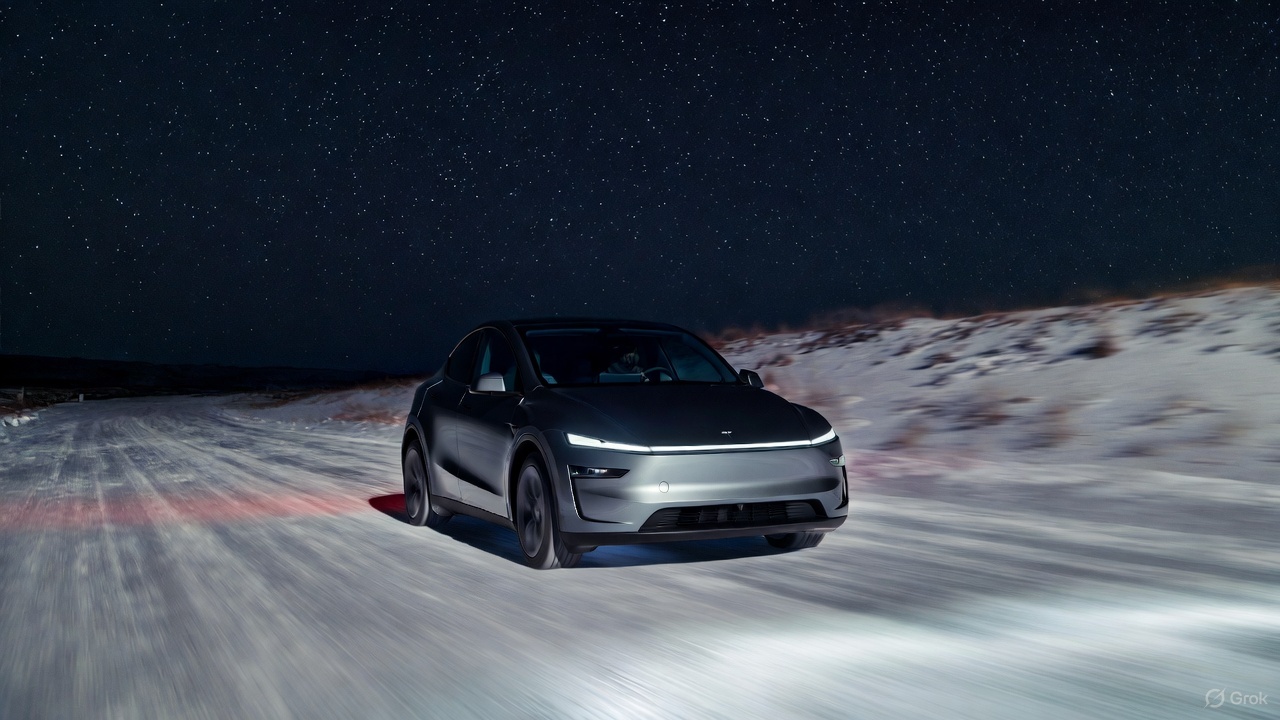
Tesla Full Self-Driving is getting its first taste of Winter weather for late 2025, as snow is starting to fall all across the United States.
The suite has been vastly improved after Tesla released v14 to many owners with capable hardware, and driving performance, along with overall behavior, has really been something to admire. This is by far the best version of FSD Tesla has ever released, and although there are a handful of regressions with each subsequent release, they are usually cleared up within a week or two.
Tesla is releasing a modified version of FSD v14 for Hardware 3 owners: here’s when
However, adverse weather conditions are something that Tesla will have to confront, as heavy rain, snow, and other interesting situations are bound to occur. In order for the vehicles to be fully autonomous, they will have to go through these scenarios safely and accurately.
One big issue I’ve had, especially in heavy rain, is that the camera vision might be obstructed, which will display messages that certain features’ performance might be degraded.
So far, from what we’ve seen, snow has not been a huge issue for the most recent Full Self-Driving release. It seems to be acting confidently and handling even snow-covered roads with relative ease:
FSD 14.1.4 snow storm Ontario Canada pic.twitter.com/jwK1dLYT0w
— Everything AI (@mrteslaspace) November 17, 2025
I found the steepest, unplowed hill in my area and tested the following:
• FSD 14.2.1 on summer tires
• FSD 14.2.1 on winter tires
• Manual drivingBut I think the most impressive part was how FSD went DOWN the hill. FSD in the snow is sublime $TSLA pic.twitter.com/YMcN7Br3PU
— Dillon Loomis (@DillonLoomis) December 2, 2025
Well.. I couldn’t let the boys have all the fun!
Threw the GoPro up and decided to FSD v14.2.1 in the snow. Roads were not compacted like the other day, a little slippery, but overall doable at lower speeds. Enjoy the video and holiday music 🎶
Liked:
Took turns super slow… pic.twitter.com/rIAIeh3Zu3— 🦋Diana🦋 (@99_Colorado) December 3, 2025
Moving into the winter months, it will be very interesting to see how FSD handles even more concerning conditions, especially with black ice, freezing rain and snow mix, and other things that happen during colder conditions.
We are excited to test it ourselves, but I am waiting for heavy snowfall to make it to Pennsylvania so I can truly push it to the limit.
News
Tesla hosts Rome Mayor for first Italian FSD Supervised road demo
The event marked the first time an Italian mayor tested the advanced driver-assistance system in person in Rome’s urban streets.
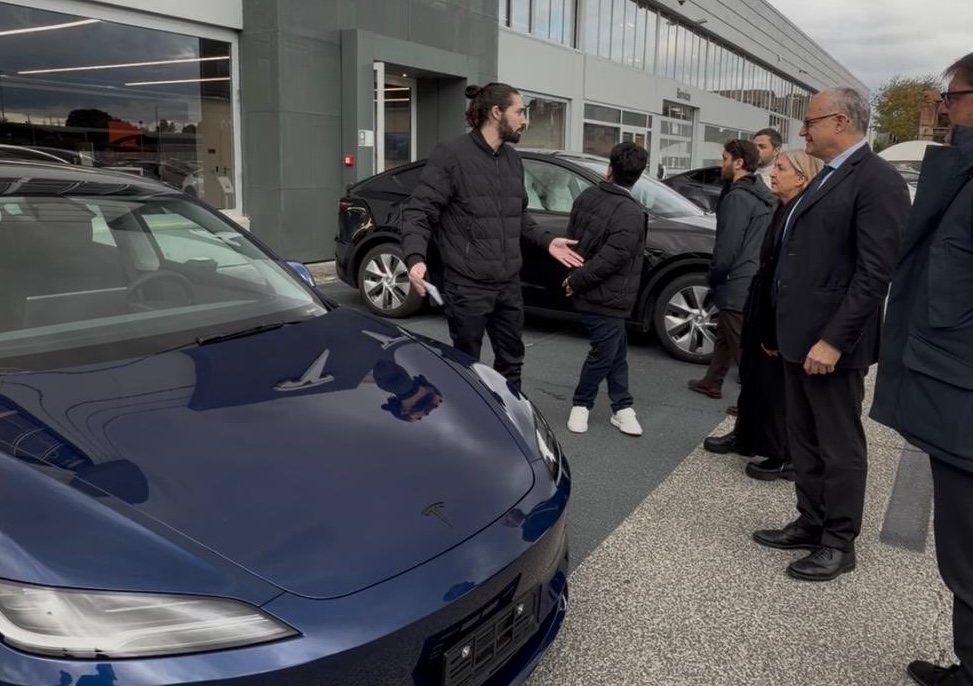
Tesla definitely seems to be actively engaging European officials on FSD’s capabilities, with the company hosting Rome Mayor Roberto Gualtieri and Mobility Assessor Eugenio Patanè for a hands-on road demonstration.
The event marked the first time an Italian mayor tested the advanced driver-assistance system in person in Rome’s urban streets. This comes amid Tesla’s push for FSD’s EU regulatory approvals in the coming year.
Rome officials experience FSD Supervised
Tesla conducted the demo using a Model 3 equipped with Full Self-Driving (Supervised), tackling typical Roman traffic including complex intersections, roundabouts, pedestrian crossings and mixed users like cars, bikes and scooters.
The system showcased AI-based assisted driving, prioritizing safety while maintaining flow. FSD also handled overtakes and lane decisions, though with constant driver supervision.
Investor Andrea Stroppa detailed the event on X, noting the system’s potential to reduce severe collision risks by up to seven times compared to traditional driving, based on Tesla’s data from billions of global fleet miles. The session highlighted FSD’s role as an assistance tool in its Supervised form, not a replacement, with the driver fully responsible at all times.
Path to European rollout
Tesla has logged over 1 million kilometers of testing across 17 European countries, including Italy, to refine FSD for local conditions. The fact that Rome officials personally tested FSD Supervised bodes well for the program’s approval, as it suggests that key individuals are closely watching Tesla’s efforts and innovations.
Assessor Patanè also highlighted the administration’s interest in technologies that boost road safety and urban travel quality, viewing them as aids for both private and public transport while respecting rules.
Replies on X urged involving Italy’s Transport Ministry to speed approvals, with one user noting, “Great idea to involve the mayor! It would be necessary to involve components of the Ministry of Transport and the government as soon as possible: it’s they who can accelerate the approval of FSD in Italy.”
